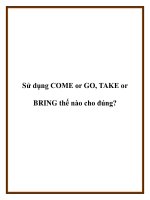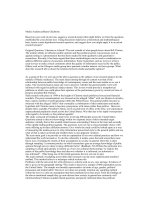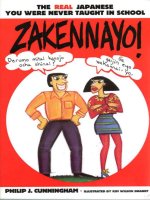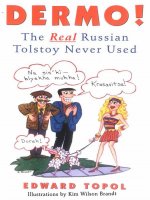libertine or liberal the real truth regarding bill clinton
Bạn đang xem bản rút gọn của tài liệu. Xem và tải ngay bản đầy đủ của tài liệu tại đây (43.66 KB, 3 trang )
Media AudiencesShane Gladstone
Based on your work in part one, suggest a research project that might follow on from the questions
established by your chosen text. Using discussion material as a theoretical and methodological
base, locate a main hypothesis/research question, and suggest how you might apply it to an actual
research project?
Original Question: Libertine or Liberal? The real scandal of what people know about Bill Clinton.
The media's ability to influence public opinion and thus political action via processes such as
agenda setting is a phenomenon that has been studied by both qualitative and quantitative
researchers. Recently it has been argued that these methodologies can be used in combination to
address different aspects of consensus information. Some researchers such as Lewis et al have
used surveys to make critical comments about the quality of information received by the public.
Others such as the Glasgow media group have pursued a similar interest via focus groups. What
does this research tell us about the relations between media and public opinion?
As a group of five we were given the above question as the subject of our research project for the
module of Media Audiences. The main ideal running through its content was that of the
relationship between public knowledge of contemporary issues and the mass media as we see it
today. The research projects main aim was to discover whether the general public were well
informed with regard to political subject matter. This in turn would provide a metaphorical
platform on which one could place their opinions of the performance given by current (at time of
project) president Bill Clinton.
Said research took place in 1998 at the height of Clintons much publicised sexual and financial
scandals. The press sensationalism was focused on his alleged "affair" with one Monica Lewinsky,
then a junior member of staff operating within the White House. The general public become so
obsessed with the alleged "affair" that eventually a combination of their enthusiasm and media
hyperbole led Clintons name to become synonymous with sleaze rather than politics. However,
despite these scandals, President Clinton, in his second term of office at the time, was enjoying an
unprecedented popularity streak across the United States. Was that due to his rapid overexposure
with regard to Lewinsky or his political agenda?
The study consisted of telephone interviews involving 600 people across the United States.
Questions aimed to discover knowledge within two separate areas of their intended target
audience: initially that of the scandal related issues surrounding Clinton at the time and secondly
of his rapidly fading political agenda. The questions were set out as closed multiple choice with
some offering up to three different answers. On a whole the study could be looked upon as a way
of measuring the medias power to relay information spoon-feed style to the general public and see
what of that is taken on board and whether there is any apparent variation.
The texts main goal is to provide us with an explanation of our own cultural practices and how we
understand the world around us. To do this coherently it makes sense that said researchers must
find a way of relating the results of their assumptions to society in general. Here this is done
through sampling "a common practice in which researchers gain an average knowledge of public
opinion through surveys done in many different forms" (Ruddock: 50) Within this particular text
sampling is relied upon greatly to inform us of our own cultural shortcomings "to explore the
nature of the public knowledge base and discover whether it is informed, un-informed or
mis-informed". (This being one of the initial questions the text sets out to ask)
The main method of sampling used within their research was the more sophisticated stratified
method. This method refers to a technique which sections the
Problems with the universal list with reference to criteria such as sex, race and age. Evidence of
this is given in the paragraph starting "The study is based on a sample of 600 respondents across
the United States. The sample was broadly representative in terms of age, gender, political
persuasion and media habits" However as it does not actually mention any sampling method
within the text it is only my assumption that these methods have been used. From the findings of
the above mentioned sample they go onto discuss how society in general are extremely well
informed about Clintons scandal related questions and poorly informed about his political
positions. This shows an immediate hierarchy issue set up where the researchers are taking a
culturally superior stance through generalized sample findings. Looking at their results in a
positivist style they make claims suggesting modern day society is a sleaze hungry, television junk
food homogonous mass with no understanding of politics or popular culture. If the researchers had
considered that even "light" viewers who watch two hours of television each day, were, at the
time, living in a world where Clinton/Lewinsky headed prime-time ratings across all mediums
then they would surely understand the reason a higher percentage of their sample had a more
intuitive understanding of said issues rather than that of Clintons political practices and stance.
Ask yourself this, when, in your lifetime, excluding only war and famine, has politics been subject
to such hyper-real exposure?
Problems with Lewis, Morgan and Jhally's use of sampling arise constantly throughout the text. It
is close to impossible to attain a fair medium when regarding age, race and gender of a nation as
immense as the United States. "As with many of the social sciences, sampling theory does not
perfectly relate to sampling practice. As Babbie states, it is virtually impossible to find a list of
potential participants that does not include some form of systematic error. The problem is
exacerbated by the fact that it is often impossible to find a universal list of potential participants.
Researchers are always limited by factors of time, money and geography" (Ruddock: 51) If Lewis,
Morgan and Jhally had carried out their sampling in a more ethnographic way: putting themselves
on the same natural level as the sampled public then they questioned themselves and consequently
discovered that they also knew more regarding scandal than they did regarding politics. They go
onto discuss education. Initially claiming, "The more years of education, the more you are likely
to know" before immediately changing opinion. Informing us that "more education was not
generally related to a better understanding of more political positions" indeed "The more educated
respondents were sometimes a little more likely to make incorrect assumptions about Clintons
liberalism" This section concludes on the note "The better educated group actually did worse than
the less educated group on the questions regarding welfare, healthcare and democrat party
funding" thus completing a complete circle change within their findings.
On a whole their research presented us with nothing more than generalisations and sways of
opinion. This, however, is typical of the quantitative style of the sample surveys used. "Too rigid
to be of much use within the cultural studies arena" (Ruddock:14) Quantitative research limits
possible responses to the confines of multiple-choice questions. If our researchers had followed a
looser, more qualitative style of audience research then they would have discovered important
issues regarding their audience such as individual opinion, character traits and financial
backgrounds. These are all subjects that should be taken into account within the arena of political
audience research. If, as a pose to the emotionless telephone blanket interviews, they had
promoted open-ended one to one interviews and open public focus groups it would have been a far
simpler task for them to achieve their targets with honest and realistic answers.
For example, looking at a project carried out by The Glasgow Media Group regarding the 1980's
minors strike, one finds their use of qualitative research and sampling gives the reader a much
more coherent understanding of the writers preferred opinions. The main advantage on show is
their understanding of how individuals can read the same text but have a different understanding
of it based on their own pre-existing beliefs, experiences and values. For example, football
supporters are alleged to 'see' only the fouls committed by the other side. This can be related to the
Clinton study in a very simplistic manner. Women who have experienced similar situations
involving sex in the workplace will be more supportive of Lewinsky and therefore take a higher
interest in scandal than that of politics.
It is from this group and their method and style that I would take inspiration in devising a more
advanced follow on or alternative to Morgan, Lewis and Jhally's work. My first and main change
would be that of research methods from quantitative to qualitative. This would be done in the
main by my use of focus groups. Focus groups are an open-ended style of group interview,
usually held in comfortable, neutral surroundings, such as community centres or village halls.
These groups tend to start from the audiences point of view, this is a major advantage, which can
lead to more accurate results and findings. The neutral setting is also a major plus as it puts people
at ease and adds familiarity. This way although you are conducting research, the people involved
may feel more that they are just conducting a conversation and repeating their views,
consequently, this familiarity allows people to unwittingly drop their guards which leads to more
honest and intuitive answers and opinions being put forward. In a focus group the public feel less
'under the microscope' than when being subjected to a cold multiple-choice interview over the
phone at 5pm while the families evening meal is burning in the oven. There are slight
disadvantages in the use of focus groups, for example: people in the research could still feel that
they are in an experiment. This could see their brains conducting answers to please the researchers
or give off a structured fake opinion. These disadvantages are, however, in the minority and are
far outweighed by the advantages displayed above.
In my work of applying the use of focus groups to their study I would first find a suitable location:
one which echoed warmth and familiarity, in which I could hold the groups. I would then devise
questions or points, which could be raised. My main aim would be for the supposed 'questions' to
be more like open discussion points. So, for example, one could be presented with a sentence or
paragraph discussing "whether or not they feel that, as a society, they are aware of the medias
power and use of propaganda and sensationalism when passing on information to them. In simpler
terms, are they aware of the medias power to blow things out of proportion and change the main
components of stories to give a completely different meaning or impression?" The questions
initially proposed by Lewis, Morgan and Jhally were closed multiple choice undertaken among the
confines of a telephone conversation. By having focus groups and raising issues rather than asking
direct questions one will find a lot more flow and natural progression. This in turn will lead to
clearer and more concise outcomes. Other question topics could include that of : 1. "As a public,
you allegedly have a better understanding of Clintons scandal related issues rather than political
agenda: discuss and explain?" 2. "Claims that you as a public are mis-informed with regard to
Clintons political agenda have arisen? Discuss" 3. " New Democrat? Discuss your opinions on this
in comparison with the liberal wing of the party" 4. "As a nation, you are willing to accept his full
package in sake of the things you support? The lesser of two evils? Discuss" Once devised these
questions would be displayed in several ways, these would include: 1, a pamphlet to be given to
each member of the public in attendance. Pamphlets would pose the questions in an
un-intimidating form and would also include prose with regards to our group's history and work.
Hopefully this would again aid in the familiarisation of our audience to us and provide them with
some mental and visual stimulation should they feel bored or distracted at any point. 2, they
would also be wrote in large, bright letters upon a white board which would provide us with an
initial springboard for the discussions and also act as a loose agenda for the meeting. Again,
working along the comfort and warmth vein, the group would be provided with refreshments, such
as coffee and biscuits, throughout the meetings duration. The meeting would be held in
community centres throughout the states, this would either be done through volunteer workers
helping in each state or us as a group taking the focus group 'on the road' travelling from city to
city and conducting the groups in our transport/meeting room. Once all the details had been
finalised we would then begin to invite and advertise. Taking a stratified sample of a higher
number of the population, sorting into age, rage and gender before posting invites with incentives
to attend such as free gifts or tokens, perhaps we could attain some sponsorship from a major
company?
To conclude, this type of research would provide the next step to the questions initially posed in
the report conducted by Lewis, Morgan and Jhally. The open style of the questions/topics would
provide the researchers with a more advanced, intuitative understanding of their audience.
Consequently, this would allow said researchers to make more rigid valid judgements on the
American public rather than just sweeping generalisations without root. As an afterthought, the
division between qualitative and quantitative methods has evolved for a number of reasons but we,
as a society should not follow these religiously. Perhaps if more researchers allowed the two styles
to intertwine then we as a public and they as academics would develop a more intuitive
understanding of media power?









